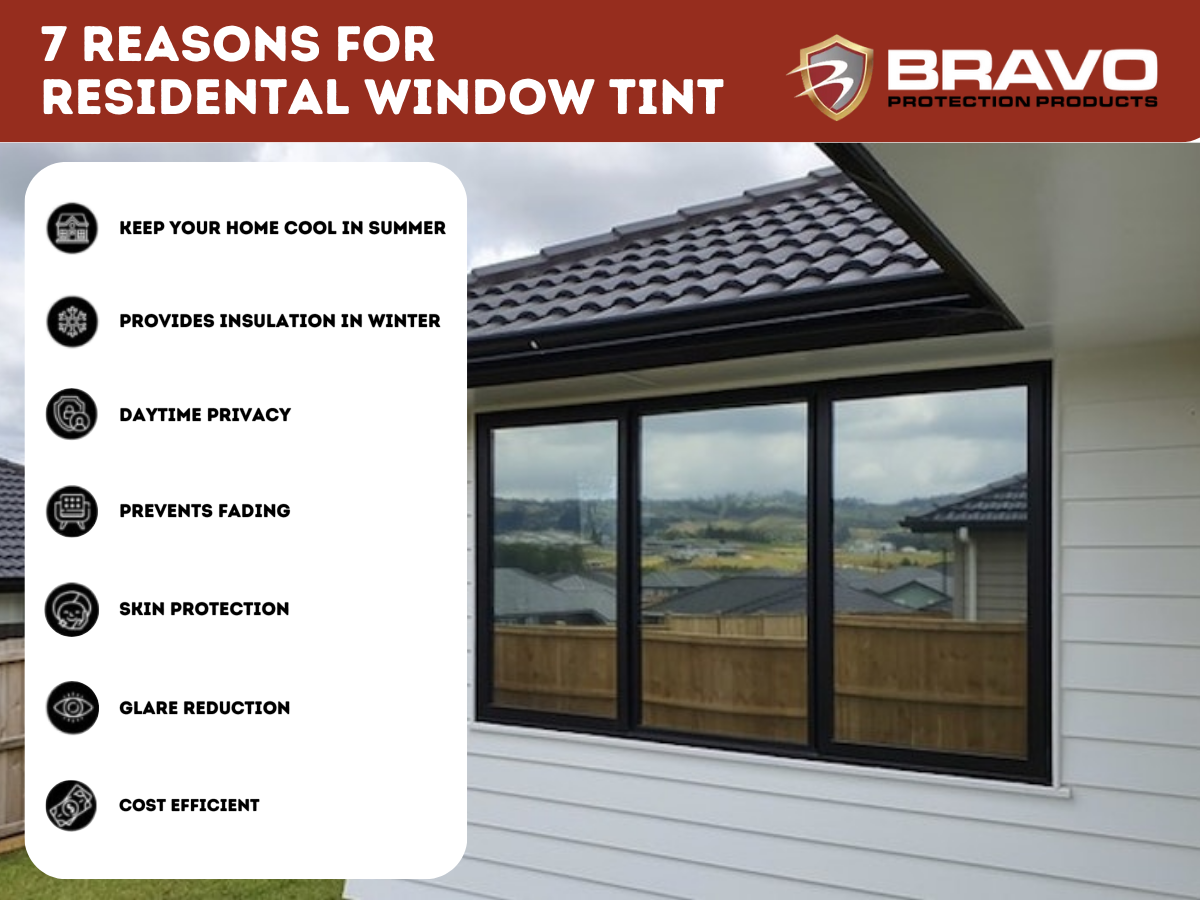Exactly How Residential Home Window Tinting Improves Your Home's Energy Performance
Residential window tinting provides an engaging remedy for property owners looking for to enhance energy effectiveness within their living rooms. By using specialized films to windows, it properly reduces heat transfer, consequently maintaining interior temperatures and lessening the demand for too much home heating or air conditioning.
Understanding Home Window Tinting
Recognizing window tinting is necessary for homeowners seeking to boost both convenience and power performance in their living spaces. Residential Window Tint. Window tinting entails the application of a slim movie to the inside or outside surface of glass windows. This film can considerably modulate the amount of sunshine and warm that gets in a home, therefore affecting interior environment conditions
There are numerous types of home window tinting movies offered, each with unique residential or commercial properties. The effectiveness of home window tinting is frequently determined by its Visible Light Transmission (VLT) percentage, which suggests how much light can pass via the film.
Benefits of Power Performance
Window tinting not just improves visual appeals but additionally plays a significant duty in enhancing power performance within domestic rooms. By minimizing heat transfer with windows, colored films produce a more steady interior climate, which can bring about considerable decreases in energy usage for heating & cooling. This power effectiveness equates right into lower utility costs, providing house owners with substantial long-lasting cost savings.

In addition, home window tinting improves the comfort of living spaces. By decreasing glow and blocking harmful UV rays, colored windows create an even more pleasurable environment, which can lead to improved health for passengers. The protection versus UV rays likewise assists preserve furnishings and flooring from fading, contributing to the durability of home things.
Just How Tinting Works
Tinting movies operate via a combination of advanced products and innovations designed to manage the amount of solar power going into a home. Primarily composed of polyester, these films frequently integrate metallic or ceramic bits that reflect and soak up warmth. This dual capacity enables them to significantly reduce the infiltration of ultraviolet (UV) rays and infrared radiation while permitting visible light to pass through.
The effectiveness of window tinting is gauged by its solar warm gain coefficient (SHGC), which indicates just how much solar power is sent via the home window. Lower SHGC values are better as they represent higher warm being rejected. Additionally, window tints can feature a variety of shades, permitting home owners to customize their visual preferences while boosting energy performance.
In addition, these films work as an obstacle, stopping heat loss throughout cooler months by reflecting interior warmth back into the home. This thermal insulation impact enhances the cooling benefits acquired throughout warmer months, adding to a balanced indoor environment year-round. By taking care of solar power efficiently, domestic home window tinting not just enhances comfort yet likewise plays an important duty in minimizing power consumption and lowering energy bills.
Choosing the Right Tint

There are numerous kinds of home window films available, consisting of dyed, metalized, and ceramic. Colored movies are economical yet may have restricted sturdiness. Metalized films use far better warmth rejection however can interfere with electronic signals. Ceramic movies provide outstanding heat control without endangering exposure and are extremely sturdy, making them a prominent option.
Visible light transmission (VLT) is an additional essential factor, as it shows the click for info amount of all-natural light that can pass with the colored glass. Homeowners should choose a tint with a VLT that enhances their lighting preferences while still offering ample glow decrease.
Furthermore, analyzing the solar warm gain coefficient (SHGC) can assist figure out have a peek at this website exactly how well a color can block warm from sunshine. A lower SHGC shows far better heat control, ultimately enhancing power efficiency.
Installation and Maintenance Tips
Correct installment and maintenance are essential elements in taking full advantage of the benefits of domestic home window tinting. To achieve ideal results, it is a good idea to work with a qualified expert for setup. This guarantees that the tint is applied correctly, avoiding air bubbles, wrinkles, or misalignment that can endanger efficiency. Professionals likewise utilize specialized techniques and tools, which can improve the longevity and performance of the color.
Adhering to setup, maintenance is crucial to extend the life of the window film. It is suggested to wait at the very least 30 days before cleansing the tinted windows to permit the adhesive to cure completely.
In addition, routine examinations are useful. Look for any type of peeling or bubbling, which can show inappropriate installation or use over time - Residential Window Tint. Attending to these concerns immediately can avoid additional damage and maintain power performance. By sticking to these setup and maintenance suggestions, homeowners can ensure their home window tinting remains to offer considerable power savings and convenience for years ahead.
Conclusion
In final thought, residential window tinting offers as an effective solution for boosting energy effectiveness within homes. By reducing warm transfer and obstructing damaging UV rays, window movies add to lower power intake and improved indoor convenience.
Home window tinting includes the application of a slim film to the interior or exterior surface area of glass windows. By reducing warm transfer with home windows, colored movies create a much more stable indoor climate, which can lead to substantial reductions in power intake for heating and cooling.The efficiency of home window tinting is gauged by its solar warmth gain coefficient (SHGC), which indicates how much solar energy is transferred with the home article window. By taking care of solar power effectively, domestic window tinting not only improves convenience yet likewise plays an essential role in reducing energy consumption and reducing utility bills.
By reducing heat transfer and blocking damaging UV rays, window films add to lower energy consumption and improved interior convenience.